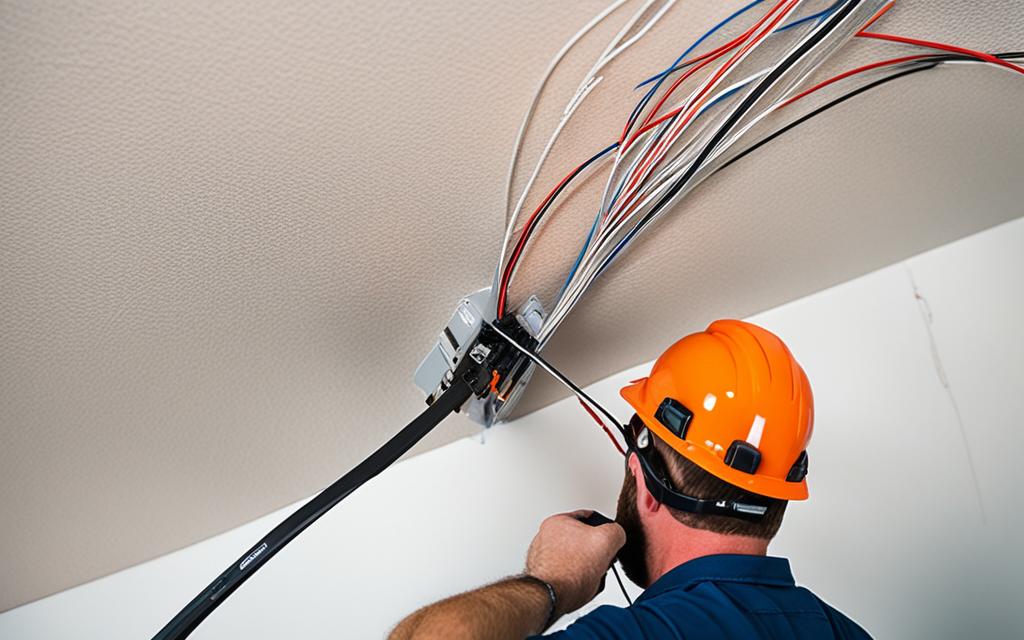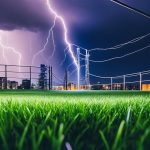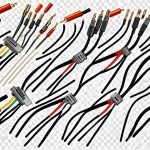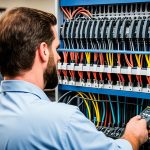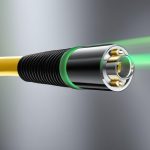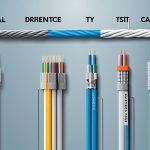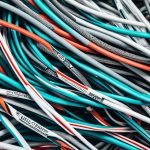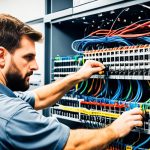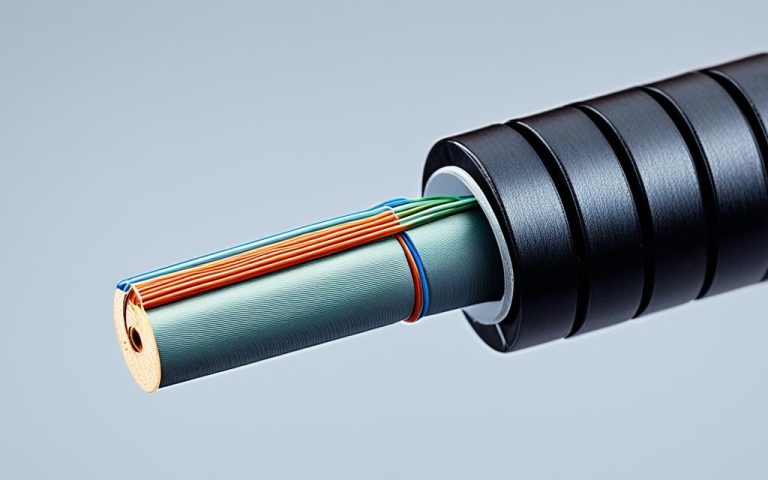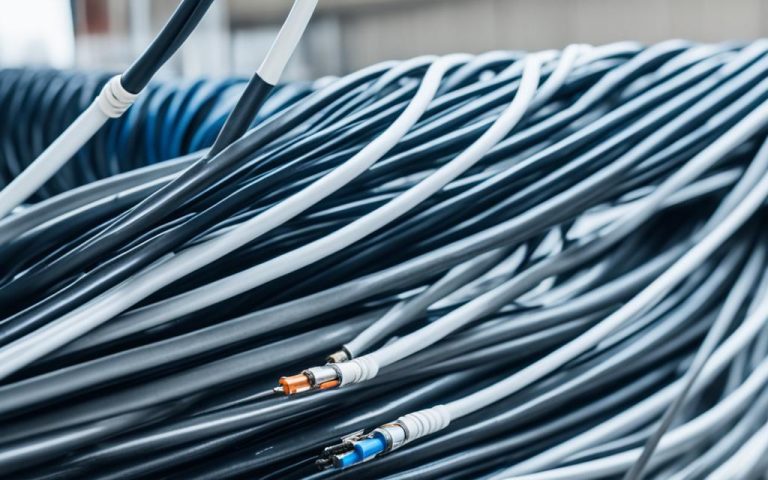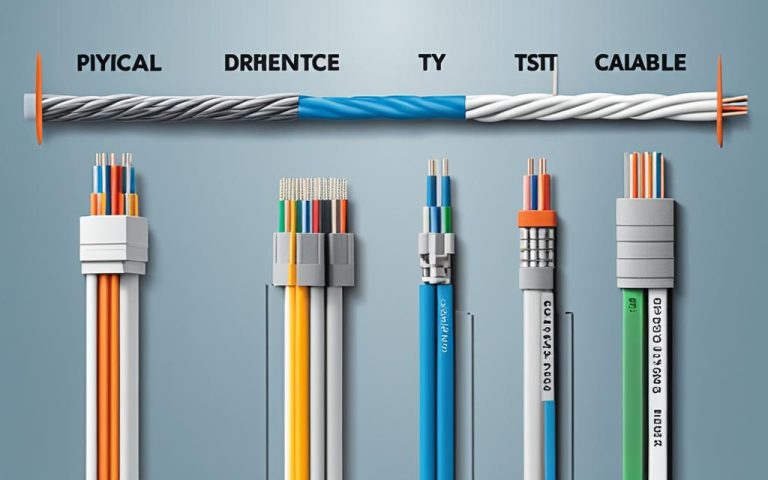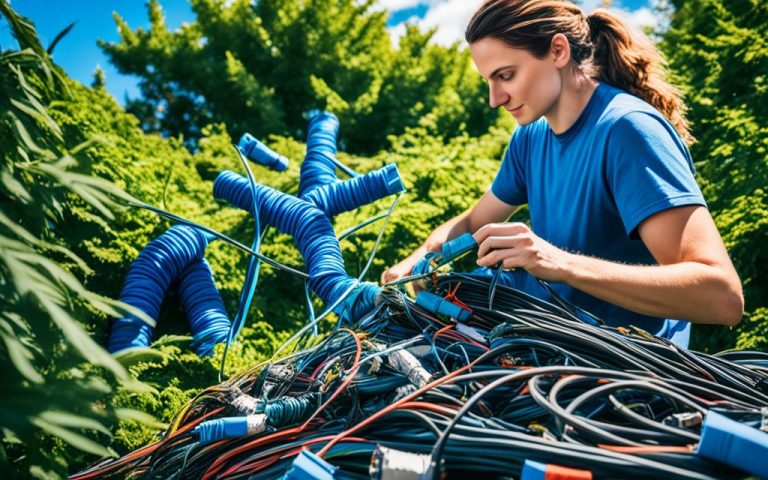Coaxial cable installation and setup are integral parts of creating a reliable and high-performing home entertainment and internet system. By following best practices, you can ensure optimal performance and seamless connectivity. In this article, we will explore the key considerations and guidelines for coaxial cable installation.
Proper installation techniques, choosing the right coaxial cable, grounding and bonding, optimizing cable routing, and thorough testing are all essential aspects of a successful coaxial cable setup. By understanding and implementing these best practices, you can avoid common pitfalls and maximize the performance of your coaxial cable system.
Whether you are setting up your home theater system or connecting to the internet, the information in this article will provide you with valuable insights into coaxial cable installation best practices. Let’s dive in and ensure a seamless and reliable coaxial cable setup for your home.
Choosing the Right Coaxial Cable
When it comes to coaxial cables, making the right choice is crucial for optimal performance. While the industry standard is RG-6, there are other factors to consider before making your decision. Understanding the different types of coaxial cables and their suitability for specific applications will help you make an informed choice.
RG-6: This type of coaxial cable is commonly used for residential applications and is suitable for both cable TV and internet connections. It provides excellent signal quality and is widely available.
RG-59: Although RG-59 cables were once popular for television installations, their use has declined due to limitations in bandwidth and signal loss over longer distances. They are now mainly used in closed-circuit television (CCTV) systems or other low-frequency applications.
RG-11: RG-11 cables are designed for long cable runs and higher signal frequencies. They offer less signal attenuation over distance compared to RG-6 and are commonly used in commercial installations or where long cable runs are required.
It’s important to consider the specific needs of your installation when choosing coaxial cables. Factors such as signal strength, distance, and frequency requirements will impact the performance and reliability of your system.
Additionally, when choosing the right coaxial cable, ensure that it meets industry standards and is certified for the intended use. Look for cables with proper shielding and insulation to minimize signal interference.
If you are unsure about which coaxial cable to choose, consult with a professional or reach out to the manufacturer for guidance based on your specific requirements.
Comparison of Coaxial Cables
| Coaxial Cable Type | Suitability | Signal Quality | Availability |
|---|---|---|---|
| RG-6 | Residential applications, cable TV, internet connections | Excellent | Widely available |
| RG-59 | Closed-circuit television (CCTV) systems, low-frequency applications | Limited bandwidth, signal loss over longer distances | Less common |
| RG-11 | Commercial installations, long cable runs, higher signal frequencies | Less signal attenuation over distance | Less common |
Choosing the right coaxial cable is essential for optimal performance and reliability. Consider the specific needs of your installation, understand the different types of coaxial cables available, and ensure industry standards are met. Taking these factors into account will help you make an informed choice that meets your requirements.
Proper Installation Techniques
Proper installation techniques are crucial for ensuring optimal performance and reliable connectivity of your coaxial cable. By following these best practices, you can maximize signal quality and minimize signal loss. Here are some essential techniques to keep in mind:
Avoiding Sharp Bends
One of the most important installation techniques is to avoid sharp bends in the cable. Sharp bends can cause signal distortion and even damage the cable itself. To maintain signal integrity, ensure that the cable follows smooth curves and gentle bends. If necessary, use cable clips or ties to secure the cable and prevent it from bending too sharply.
Stripping the Cable
Properly stripping the cable is essential for achieving a clean connection and minimizing signal loss. Use a coaxial cable stripping tool to remove the outer jacket without damaging the inner conductor or insulation. This will ensure a proper connection and help maintain the signal quality.
Compression Connectors
When connecting the coaxial cable, it is advisable to use compression connectors. Compression connectors provide a secure and reliable connection while minimizing signal loss. They are more effective than traditional screw-on connectors in maintaining signal integrity and eliminating interference. Make sure to use high-quality compression connectors that are compatible with your coaxial cable.
By following these installation techniques, you can ensure that your coaxial cable is installed correctly and delivers the best possible performance. Remember to avoid sharp bends, properly strip the cable, and use compression connectors for a secure and reliable connection.
Ensuring Grounding and Bonding
Grounding and bonding are fundamental aspects of any electrical system, including coaxial cable installations. These practices ensure safety and promote optimal performance by establishing electrical continuity and preventing voltage potential issues during lightning strikes or electrical anomalies. To achieve proper grounding and bonding, there are a few key considerations to keep in mind.
Grounding Principles
Grounding is the process of connecting electrical systems, such as coaxial cables, to the earth’s surface. It serves as a safety measure and helps divert electrical energy away from sensitive equipment and into the ground. One common component used in the grounding process is a grounding block, which provides a secure connection point for the coaxial cable.
When grounding a coaxial cable, it is important to connect it to either the grounding electrode or a qualifying connection point. This ensures that any potential electrical issues are safely directed away from the cable and nearby electronics.
To enhance the effectiveness of grounding, it is advisable to use one continuous grounding conductor to bond all electrical equipment and systems together. This provides a path for electrical current and helps prevent potential damage from electrical surges or faults.
Bonding for Enhanced Protection
In addition to grounding, bonding is another critical practice that facilitates proper electrical continuity and protection. Bonding establishes a low-impedance connection between metallic components to prevent the buildup of electrical potential differences.
When bonding, it is essential to ensure that all metallic components within the coaxial cable system are interconnected. This includes connectors, splitters, and other associated equipment. By creating a comprehensive bonding system, you reduce the risk of potential electrical hazards and damage to electronics.
Proper bonding also helps minimize the effects of electromagnetic interference (EMI) and radio frequency interference (RFI), ensuring optimal signal quality and performance.
| Benefits of Grounding and Bonding |
|---|
| Enhanced safety by diverting electrical energy away from equipment |
| Prevention of voltage potential issues during lightning strikes or electrical anomalies |
| Reduced risk of electrical hazards and potential damage to electronics |
| Minimized effects of electromagnetic interference (EMI) and radio frequency interference (RFI) |
By ensuring proper grounding and bonding in your coaxial cable installation, you can enjoy a safe and reliable connection. It is essential to follow industry-standard practices and consult with professionals if you have any uncertainties or specific requirements.
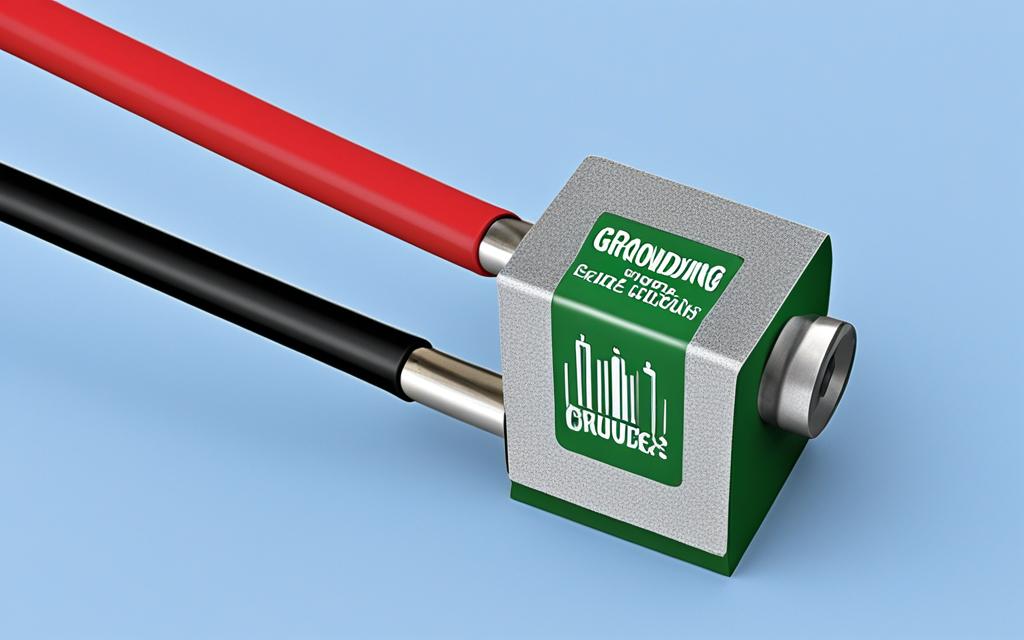
Optimizing Cable Routing
Proper cable routing is crucial to maintain signal quality and minimize interference in your coaxial cable setup. By following these best practices, you can ensure optimal performance and reliable connectivity.
Avoiding Sharp Bends
One important consideration in cable routing is to avoid sharp bends in the cable. Sharp bends can negatively impact signal quality and cause attenuation, resulting in a weaker signal reaching your devices. To prevent this, make sure to use smooth, gradual bends when routing your coaxial cable.
Keeping Coaxial Cables Away from Electrical Wiring
Another critical factor to consider is the proximity of your coaxial cables to electrical wiring. Electrical wiring can introduce electromagnetic interference, leading to signal degradation. To minimize this risk, keep your coaxial cables at a safe distance from any electrical wiring. Ideally, they should be separated by a few inches or more.
Using Clips or Staples to Secure the Cable
To optimize cable routing, it’s essential to secure the coaxial cable along its path. Using clips or staples can help keep the cable in place and maintain a clean installation. Be careful not to over-tighten or compress the cable, as this can also affect signal quality. Strike a balance between secure fastening and allowing the cable some flexibility.
“Proper cable routing is key to ensuring optimal performance and minimizing signal interference in your coaxial cable setup.”
For a visual reference on cable routing best practices, refer to the image below:
| Coaxial Cable Routing |
|---|
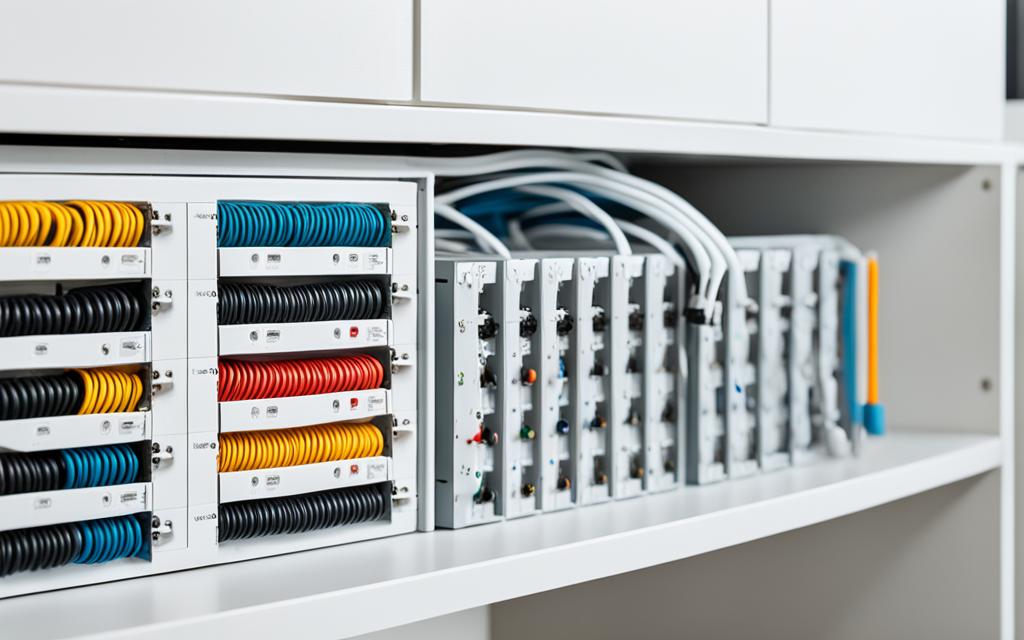 |
Testing and Troubleshooting
Once you have completed the installation of your coaxial cable, it is important to perform thorough testing and troubleshooting to ensure optimal signal quality and connectivity. Testing the signal quality and verifying the integrity of connectors are crucial steps in this process.
Signal Quality Testing:
Using appropriate testing equipment, such as a signal strength meter or a cable analyzer, you can measure the signal quality of your coaxial cable. This test helps identify any issues, such as signal loss or interference, that may impact performance. By conducting signal quality testing, you can pinpoint potential problems and take necessary steps to rectify them.
Connector Inspection:
Inspecting the connectors is another vital aspect of troubleshooting. Ensure that all connectors are properly secured and tightened. Loose or damaged connectors can cause signal loss and degrade the overall performance of your coaxial cable system. Carefully examine connectors for any signs of wear and tear, and replace them if needed.
If you encounter any problems during testing or find that your signal quality is not up to par, there are a few additional troubleshooting steps you can take:
- Check for loose or damaged cables and replace them if necessary.
- Inspect the connectors for corrosion or damage and clean or replace them as needed.
- Ensure there are no sharp bends or kinks in the cable, as these can disrupt the signal.
- Verify that the cable is properly grounded to minimize interference.
Expert Tip: Troubleshooting your coaxial cable system can be a complex task. If you are unable to identify or resolve the issue on your own, it is recommended to seek professional assistance. They have the expertise and specialized equipment to diagnose and fix any problems effectively.
To provide a visual representation of signal troubleshooting, refer to the table below:
| Issue | Possible Causes | Solution |
|---|---|---|
| No Signal | – Loose connections – Faulty cable – Unplugged equipment | – Tighten connections – Replace faulty cable – Ensure equipment is powered and connected |
| Poor Signal Quality | – Signal interference – Damaged connectors – Cable damage | – Identify and eliminate sources of interference – Replace damaged connectors – Replace damaged cable segments |
| Intermittent Signal | – Loose or damaged connectors – Cable congestion – Signal interference | – Tighten or replace connectors – Re-route cables to avoid congestion – Identify and eliminate sources of interference |
Conclusion
Coaxial cable installation is an essential step in setting up home entertainment and internet systems. By following best practices, you can ensure optimal performance and reliable connectivity in your coaxial cable setup.
Choosing the right coaxial cable, such as the industry-standard RG-6, is crucial. Understanding the different types of coaxial cables and their suitability for specific applications will help you make an informed choice.
Proper installation techniques, such as avoiding sharp bends in the cable, using a coaxial cable stripping tool for clean cuts, and using compression connectors for a secure connection, are important for optimal performance.
Grounding and bonding play a significant role in safety and performance. Ensuring electrical continuity through proper grounding and using a grounding block to protect against electrical hazards is essential.
Optimizing cable routing by avoiding sharp bends and keeping coaxial cables away from electrical wiring helps maintain signal quality and minimize interference.
After installation, it is crucial to test the coaxial cable and troubleshoot any signal quality issues. Ensuring all connectors are properly secured and seeking professional assistance when needed will help you resolve any problems.
By following these best practices for coaxial cable installation, you can set up a reliable and high-performing system for your home entertainment and internet needs.
FAQ
What type of coaxial cable should I choose for installation?
The industry standard is RG-6, but it is important to consider other factors such as the specific application.
What are the proper installation techniques for coaxial cables?
To ensure optimal performance, it is important to avoid sharp bends, use a coaxial cable stripping tool for clean cuts, and use compression connectors for a secure and reliable connection.
Why is grounding and bonding important for coaxial cable installation?
Grounding ensures electrical continuity and protects against voltage potential issues during lightning strikes or electrical anomalies. It is recommended to use a grounding block and connect the coaxial cable to the grounding electrode or qualifying connection point.
How can I optimize cable routing for coaxial cables?
To maintain signal quality and minimize interference, avoid sharp bends in the cable, keep coaxial cables away from electrical wiring, and use clips or staples to secure the cable along its path.
What steps should I take to test and troubleshoot my coaxial cable setup?
After installation, it is important to test the signal quality and ensure all connectors are properly secured. If issues persist, additional tools or professional assistance may be required to diagnose and resolve the problem.

